|
I made a big change today.
It’s HUGE. Are you ready? I just left Facebook. Today I'll share from my heart openly with you, and my goal is to communicate both the decisions I have made and why I made them. Maybe my words will even inspire you to make some changes that you know in your heart that you need to make. Maybe the decision you’re struggling with isn’t about Facebook or social media, but it’s about a relationship or habit or even a career that no longer serves you. Just because we have a lot of time invested in a relationship, or a habit, or even a career, that doesn’t mean you’re stuck there forever once you see that it’s time to do something different. Why in the world would I leave Facebook entirely? It’s a long story. Much of this story is a love story: I have loved *much more* about my time on Facebook than I have *not* loved. Facebook has been a large part of my life for so long, and it has even become my identity for these most recent years. But, like many love stories, sometimes there is a dark side that no one sees but you, playing out behind closed doors. Let’s start at the beginning: the day I joined Facebook, which FB tells me was November of 2008. That means I have spent almost THIRTEEN YEARS of my life checking in to Facebook on a daily basis. In the beginning it was a little weird. Remember how we wrote everything in the third person? “Gin is…cooking dinner for the family!” “Gin is…sick with the flu.” “Gin is…tired of talking in the third person about her daily activities.” Facebook evolved over time, of course, and I recorded my life there, just like you probably did. I can check my Facebook memories and see that on this day in 2009, I loved my new coffeemaker. In 2010, my cat got lost in the attic and wouldn’t come back down. In 2016 we were trying to trap a raccoon who we realized had been coming into our house through the cat door to eat cat food every night while we were sleeping. After being a casual Facebook user from 2008-2015, I started my first Facebook group in August of 2015 and everything started to change. I had recently lost 75 pounds through intermittent fasting, so I created the One Meal a Day IF Lifestyle support group as a place where I could both give and receive support, connecting with others following a similar path. That first week we had about 35 members, and I knew all of them personally. I remember early conversations such as “Hey, what deodorant do you like?” because it was just a group of friends who happened to all follow intermittent fasting. Over time, that group grew. People started wandering in off of the Facebook street, which felt weird, but because I LOVE intermittent fasting, and I am a teacher at my core, we welcomed them into the group and they became part of the family. Everyone wanted to know how to get started, but there wasn’t a book that had all of the most updated information all in one place-- so I wrote one. That was the birth of Delay, Don’t Deny: Living an Intermittent Fasting Lifestyle, which I self-published in 2016. As the years went on, I started new Facebook groups and they grew and grew…by the end of 2020, we had a combined membership of about half-a-million people from all over the world. Yep. You read that correctly. From 35 people that I knew personally to almost 500K. I managed the groups completely by myself from 2015 until 2018, when I brought on the first moderators to help out behind the scenes. Before that time, I was trying to manage the groups in between my work as an elementary teacher. I want you to imagine this scene: I would be teaching away, and then Facebook notifications would start to go off on my phone because there was some kind of kerfuffle going on in the groups that needed my attention. Maybe someone posted a meme that other people didn’t find to be funny, or something equally as dramatic. These were the days before post approval was a thing, so sometimes it was like the Wild West in there. I remember one day when there was some kind of blowup that made everyone mad, and one guy said, “I can’t believe Gin would allow this conversation. I am leaving and I will never follow her again or read another of her books.” I hadn’t been a part of the conversation or even seen it, because I was at work doing my job, but that day it all got really REAL, because I understood all of a sudden at that moment: people were holding me responsible for what went on even when I wasn’t there. That added a layer of pressure that hadn’t been there before. Suddenly, it wasn’t quite as much fun as it had been. That’s the day Facebook became my job rather than just a passion project. Bringing on moderators in 2018 helped a lot. I breathed a sigh of relief, and it was amazing to have a team that was committed to helping others within the groups. I could wake up each morning knowing that eyes from Asia, Australia, Egypt, and the UK had been on the groups while I slept. I have formed lifelong friendships with this strong group of women (and a few men), and one of the best weeks of my life was when ten of them came to my house for a moderator retreat that was supposed to happen at Myrtle Beach, but Hurricane Dorian got in the way. Chad and I had just moved into our new house the week before and boxes were everywhere, but we pivoted, everyone changed their travel plans and came to Augusta instead of Myrtle Beach, and we had what feels like a combination of the world’s best housewarming party and a week-long slumber party. See? I told you…this is very much a love story. I have fierce love for the moderator team, and we have formed some of the strongest and most genuine friendships of my life. I have never known a more generous group of people. Well, that’s not true. I was a teacher for 28 years, and I knew a lot of generous-hearted teachers and school support staff over the years. The moderators have the same selfless and generous nature that you find among teachers, health care workers, and other “helpers.” I’m sure you know what I mean. I also have that same kind of fierce love for the Facebook group members…all 500K of them. We have celebrated health and weight loss victories, cheered successes, and cried together when members experienced personal tragedies that they shared with us. We helped members troubleshoot and we sent virtual hugs when they were down. And, we celebrated food and the freedom of living an intermittent fasting lifestyle. But it wasn’t all like that. My work on Facebook was always shiny on the outside, but it could be a completely different story behind closed doors. I remember the shock I got one day when I woke up to a message from a group member who wasn’t happy with the way the group had been managed so she was lashing out at me. She said: “I am going to haunt you from ghost accounts until the day I die.” That was shocking to read and also terrifying. I got a lot of harsh messages from group members over the years, in fact. After reading them, I would get shaky and it always felt like an attack, but I shook it off, because I loved the work I was doing in the groups and drew strength from that. Looking back on those few-but-impactful dark moments, and now looking forward to a Facebook-free life, I feel in some ways that I’ve gotten out of an abusive relationship, which sounds extreme but it’s my genuine emotion today. The good FAR outweighed the bad, and that’s important for me to emphasize. I am grateful for every lesson that I have learned. Even those scary moments: they taught me strength and resilience. In the fall of 2020, like many of you, I watched the documentary The Social Dilemma on Netflix, and it got the wheels turning, forcing me to re-examine what I was doing on Facebook and thinking about what a monstrous part of the day it consumes for some of us. Suddenly, I knew I needed to make a change, but I had no idea what to do about it. I had built something huge, and it felt a bit like the Hotel California: I could never leave. Here’s what I know: I’ve been on Facebook all day, every day, from the minute my eyes open to the minute my eyes close, Facebooking in between every activity of my day. For YEARS. Wake up. Facebook before my feet hit the floor. Shower. Facebook in the shower because my phone is water resistant. Coffee. Facebook while it’s brewing. Record a podcast. Check Facebook WHILE RECORDING. On and on and on until the end of the day. Check Facebook. Go to sleep. Dream about Facebook. (I wish I was kidding.) When I think about it, I realize that I haven’t been fully present in my own life since 2015. The business of Facebook never closes, not on weekends, or Christmas Day, or Thanksgiving Day, and not even when I go on vacation. Facebook never sleeps. It’s 365 and 24/7. Based on my self-reflection, I realized that leaving Facebook and forging a new path is the right thing for me to do. It’s the healthiest thing I can do for myself. I’m grateful for the connections I have made on Facebook and know that Facebook has been a large and meaningful part of my path. I am grateful for every positive moment Facebook has brought into my life, most of them through the intermittent fasting support groups. I am also grateful for all of the positive moments that these groups have brought to group members. I am humbled by the love and support I have seen group members give one another over the years. It's been a beautiful thing to be a part of. So, what happens to the Facebook support groups if I am no longer on Facebook? Thanks to the amazing Delay, Don’t Deny community moderators, we are not closing the main Delay, Don’t Deny Intermittent Fasting support group, found at https://www.facebook.com/groups/DelayDontDeny. There, the team will continue to provide moderator support for intermittent fasting in the daily “ask a moderator” thread within that group. I won’t be there, but the moderators that our community already know and love will be. Where will I be? You will always be able to find me on my podcasts. Listen to The Intermittent Fasting Podcast with cohost Melanie Avalon to hear us answer listener questions. Find inspiration by listening to me chat with other intermittent fasters on the Intermittent Fasting Stories podcast. You can even hear me talk about other parts of life on the Life Lessons podcast with cohost Sheri Bullock. I’ll also be writing more books. My latest is in the works now, and it isn’t about intermittent fasting. What? You’ll see. I’m pretty proud of this one. Coming in early 2022, from St. Martin’s Press. If you ever want to plug back in with me in an entirely new way, I’ve moved the Delay, Don’t Deny community to a new platform that’s completely off of Facebook. Go to ginstephens.com/community to find out more. It gives us many meaningful ways to connect, though in a different format than Facebook offers. There’s a learning curve because it is different and new to us, but it already feels like home to me. Also, and most importantly: it won’t be a place you are visiting every 10 minutes. You go once (or maybe twice) a day to catch up, get inspired, or find support. In between, you live your life. ❤️ I’m visiting the DDD Community on my laptop rather than on my phone (well, most of the time...), because that keeps me from feeling the need to check it while cooking dinner, taking a shower, or having a conversation with my husband. This forces me to be more intentional when it comes to my usage rather than checking in hundreds (thousands?) of times a day. Within the DDD Community, you’ll be able to ask me questions personally in the Ask Gin group and I am mentoring new IFers in the 28-Day FAST Start group and in the 1st Year group. That feels like home to me. The new DDD Community is very much about connection and community, which is the most important thing in the world to me. We can be real and vulnerable, yet also laugh together, while enjoying an added layer of privacy that is absent on Facebook. We have location-based groups where you can meet other IFers close to you, or even connect with other members when you are traveling. I did not make the decision to leave Facebook lightly, and I understand that readers who may have been in the Facebook groups for years will feel a sense of sadness that the DDD community is changing. I feel it, too. Facebook has been MY home-base for all of these years. Will I ever come back to Facebook? Never say never, right? For now, though, this feels right in my heart and soul. Maybe I just need a break. But maybe, just maybe, this is forever.
83 Comments
This is not going to be a post with medical tips for how to use intermittent fasting to survive in a pandemic. I am not a doctor, and I don't play one on TV. Don't look to me for your medical advice, in fact. There are people for that.
But, I am a person, just like you. I am an intermittent faster, just like you. And I AM STRESSED. Just like you. Deep breath. Yep. Me, too. I’m also feeling the effects of stress during these uncertainties. Anyone else feeling weepy, or panicked, or just generally out of sorts? Anyone looking longingly at the snack cabinet, or the fridge, or, heck...the liquor cabinet? Yep. We probably all are feeling this, to one degree or another. The world feels OUT OF CONTROL. Our brains cry out to be soothed. We reach for food. This article explains why we have a tendency to turn to food when we are stressed: https://www.health.harvard.edu/staying-healthy/why-stress-causes-people-to-overeat. See? Biology. It's not your fault. Be strong, friends. In this season of our lives, we have little control of what is happening in our world. But, we CAN lean into our daily fasting practice. Maybe today your window is longer than you wanted it to be. That’s okay. Maybe today you reached for comfort foods. That’s okay. Maybe this season in our lives will be a story of weight maintenance rather than weight loss. That’s also okay. Whatever happens, though, leave the guilt at the door. Social distance yourself from the guilt, in fact. THERE IS NO PLACE FOR GUILT in our lives right now. QUARANTINE THAT GUILT somewhere that you can't see or feel it. Fast clean, and allow yourself to feel empowered as you do. None of us knows what the future holds. While we wait for our world to heal, relax into your life as you can. Create your new-normal, and develop new routines. Look for joy and beauty in your life. Turn off the news. Connect with friends and loved ones virtually. Make time to have fun. You can use this as a time to strengthen your intermittent fasting practice rather than allowing it to fall by the wayside. How can you use this time to strengthen your IF practice? I have a few suggestions: If you are looking for intermittent fasting inspiration, listen to episodes of the Intermittent Fasting Stories podcast. You can listen for free on any podcast app, and starting in April, there will be 2 episodes per week for you to listen to: one on Tuesday, and one on Thursday. It's impossible to listen to these stories and not feel inspired. Read (or reread) my books: Delay, Don't Deny and/or Feast Without Fear. Delay, Don't Deny will remind you why you choose to live an intermittent fasting lifestyle, and Feast Without Fear will teach you why we are all different when it comes to what foods work best for our unique bodies...so you can leave all food-related guilt by the wayside. (Amazon is not shipping paperbacks at the moment, but the Kindle version is available for immediate download. You can also listen to DDD for FREE on Audible if you are a new subscriber. Click HERE.) Listen to The Intermittent Fasting Podcast (available on any podcast app) to hear listener questions and other IF-related chat from me and cohost Melanie Avalon. Join my support group. Our community is coming together during this difficult time to support one another through it. NOTE: As of 9/21, we are welcoming new members in our off-Facebook community. Go to ginstephens.com/community to find out more. Fast on, friends. We've got this. Good news! No. Skincare does not break the fast...unless you are eating it. Please do not eat your skincare products. That being said, does our skincare matter? I'm glad you asked! If you know me, you know that I’ve been living an intermittent fasting lifestyle since 2014. When I started, I continued to eat the Standard American Diet (or “SAD”), but over time, my body has naturally guided me toward different choices during my eating window. Now, I make much different choices when it comes to the foods I eat, and I feel better at 50 than I did at 30. The changes in what I eat have carried over to other parts of my life, as well. These days, I make more natural choices when it comes to cleaning products, wine, and even things like deodorant, skincare, and makeup. Enter Melanie Avalon and Beautycounter. As with many things Melanie loves (think Native, Joovv, Feals, etc.), here is what happens. Melanie will start talking about something on the Intermittent Fasting Podcast, and I am not interested. I don’t need whatever it is she is using, ThankYouVeryMuch. But over time, I’ll start looking into whatever it is, and before you know it, I’m HOOKED. That is what happened with Beautycounter. Why do I love Beautycounter? While we often think of exposure to toxins in our food or cleaning products, guess what is one of the biggest sources of toxic exposure that we’re directly exposed to each and every day, especially for women? That would be our skincare and makeup! Our skin is actually our body’s largest organ, and what we put on our skin can go directly into our bloodstream. Even though I don't want you to eat your skincare, as I already said, the products enter your body as if you were eating them. And did you know there is essentially no government regulation in place for skincare products? While Europe has banned over 1000 chemicals from skincare, the US has banned fewer than 10! Would you put banned chemicals in your black coffee? I wouldn’t. So why would we put it into our bodies through our skin? It can be hard to find safe skincare and makeup that actually works. Thankfully, there’s Beautycounter. They formulate amazing skincare and makeup and do extensive testing to create products that actually work, look amazing and most importantly, are safe for your skin. With Beautycounter, you can easily switch to safer skincare and makeup. And, not only is it so safe it’s Melanie-approved, but the makeup and skincare products are also high-quality. I’ve switched over my makeup drawer, and I’m thrilled. When you shop with me at beautycounter.com/ginstephens, you are helping to support the Intermittent Fasting Stories podcast with every purchase. If you want to try Beautycounter (and once you visit their website, you know you will!), I highly suggest you become a Band of Beauty member. It’s sort of like Amazon Prime for skincare. Go to the menu and select “become a member”. For $29 a year, Band of Beauty members receive:
I’m so excited to introduce y’all to this amazing company. Let me know what products you love in the Facebook groups! This poem was written by Masha Twinkletoes and she shared it in our online support group the other day. Well, we all loved it so much that I asked for permission to post it here on my website. You can also find a YouTube link of Masha reading her poem to you at this link.
I hope y'all enjoy this Seuss-style IF poem as much as I do! ---------------------------- Once upon a time, in a land far away Lived a woman who battled poor health every day Digestion so slow, immune system so weak She needed a change, a reset, a tweak For as long as she knew, she’d always been “round” She’d tried all the diets, losing pound by pound First low fat, then Slim Fast, then Atkins, then juicing Counting calories, macros, restricting, reducing Getting her hopes up, “This must be the way!” Yet gaining it all back at the end of the day And blaming herself for not sticking it out “YOU QUIT YET AGAIN?!” she’d hear herself shout Feeling tired and cranky, discouraged and sad Till one day she saw yet another new “fad” Her friend had been fasting and seeing results “Hmm… Is this legit? Or one of those cults?” With nothing to lose, and desire to try She settled on reading “Delay, Don’t Deny” It sounded so easy, too good to be true Eat what you want, while losing weight too? Just make sure your windows are properly spaced Eating 6 meals a day should be replaced By fasting at least 16 hours per day Drinking water, plain tea, and black coffee’s OK Without hesitation she jumped in with both feet Fasting long as she could, before she would eat At first the days dragged, as her body adjusted They say “trust the process” so the process she trusted A few pounds came off, but there was no huge change Her fasting routine she’d switch up, rearrange Months passed and she noticed her appetite ceased Her thighs, and her hips, and her waist had decreased Her weight was the same, but her shape was brand new Less pudgy, more toned, and her confidence grew But how does this work? Whats the science behind it? The answer is there, you just have to find it “Obesity Code” was next on her list If insulin’s high, your fat will persist High insulin’s triggered by eating all day But fasting helps fat stores just melt away However, take note, it’s not always so quick Sometimes your body plays a neat trick Fasting is known to increase HGH It helps you look younger, reversing your age It builds you more muscle, bone density rises Your weight *may* increase, but you’ll lose a few sizes Autophagy ramps up as you lengthen your fast Recycling old cells, and renewing at last But, isn’t fasting like starving, you wonder confused NO, your body has plenty of fuel to be used But don’t calories in equal calories out? NO! they aren’t all equal, without a doubt OK, but I’m hungry, which means I should eat Those nagging old thoughts can be so hard to beat It’s all in your head though, just take a deep breath You’ll soon get to eat, you’re not starving to death And don’t get discouraged, this isn’t a race Everyone’s journey has it’s own pace Eating non-stop is what got us all here Our signals of satiety have all disappeared Hormonal imbalance is now the new norm Our mindset and habits we must reform After reading and researching all through the night Our heroine sighed, and took her last bite Closing her window, and shifting her thinking To long-lasting health, and her belly fat shrinking Months flew by quick, her weight stayed the same But her mind was at peace, no guilt and no shame Digestion improved, her immune system stronger Her nails and hair grew longer and longer Her skin cleared up, and her wrinkles receded Her eyes looked much bigger, she felt she’d succeeded In shifting her mindset, and settling in To fasting and feeling OK in her skin She realized healing inside must come first The weight will fall off when the damage’s reversed Clean fasting is key, it’s not worth it to cheat Just stick to your guns, success will taste sweet She fasted, she feasted, she lost and she gained Through hard times and hurdles, determined remained She knew that she finally found “The Way” Fasting and feasting, don’t deny, just delay! By: Masha Twinkletoes Are you tired of making a New Year's Resolution every single year to lose weight and/or get healthy? I get it. I used to be you. ALLLLLL of those years of diet resolutions, and I would be diet-ed out before January was even over. Sound familar? Good news! 2020 can be the LAST TIME you make a New Year's Resolution about losing weight, EVER! It's true...you can join the intermittent fasting revolution and get off of the diet roller coaster for good! I am what you might call an early adopter, and I am proud of it. I began dabbling in IF back in 2009, finally getting serious in 2014 once my weight got up to 210 pounds. I was obese and it was time to do something about it. I lost over 80 pounds living an intermittent fasting lifestyle, and unlike diet plans of the past, the weight has stayed off over the years. These are a few of my before-and-after shots. Thank you, intermittent fasting! As you can imagine, I LOVE intermittent fasting for what it has done for me. Every year I say the same thing: THIS is the year that Intermittent Fasting will be mainstream! And every year, that becomes more and more true. I'm excited to announce that 2020 is *the* year we have all been waiting for. And to know that this is true, you can look no further than the most recent issue of the world's leading medical journal: The New England Journal of Medicine. In it, there is a review article that has gotten the attention of both doctors and the media. The article is called Effects of Intermittent Fasting on Health, Aging, and Disease, and you can access it for FREE at this link: www.nejm.org/doi/10.1056/NEJMra1905136 Please note that you will need to sign up for a free account to access the article, but it is worth the two minutes that it will take you to sign up, and the New England Journal of Medicine isn't going to spam you. I promise. Here are a few of the benefits outlined in the NEJM article:
The article goes on to list a wide variety of clinical applications for intermittent fasting:
As I like to call it, intermittent fasting is the health plan with a side effect of weight loss. Here is a summary article from Johns Hopkins: "Intermittent Fasting: Live 'Fast,' Live Longer?" The research from this review article was covered by all of the major news outlets over the past couple of days, and if you want to read their summaries, here are a few: Web MD: "Intermittent Fasting Diet Could Boost Your Health" CNN: "Intermittent Fasting May Make You Live Longer" NBC: "Is Intermittent Fasting Good For You? Regimen Boosts Weight Loss, Disease Resistance" ABC: "Intermittent Fasting is Google's Most-Searched Diet of 2019: Is it Right for You?" Fox: "Fasting Diets May Add Years to Your Life As Well As Help You Lose Weight, New Study Suggests" So! Now you're convinced. Intermittent fasting is NOT a passing fad, and it is the real deal. Not only will you get healthier, but you might even shed those pounds you are hoping to get rid of...for good. That's one of the best features of living an intermittent fasting lifestyle, in fact. As your body gets healthier over time, you should also lose weight. Turns out we have had it backwards this whole time: we don't lose weight in order to get healthier. We actually need to get healthier in order to lose weight. And, intermittent fasting helps us do both. As our body works to reverse insulin resistance, for example, we can finally tap into our stored fat for fuel...that's why it's there, after all. You may be wondering how to get started. Intermittent fasting is free...nothing to buy, and no special foods or supplements needed. Well, there is one thing to buy--my book: Delay, Don't Deny: Living an Intermittent Fasting Lifestyle. In it, you will learn how to craft an intermittent fasting lifestyle that works for you, and you will make 2020 your healthiest year yet. Yes, intermittent fasting is simple, but there are a few things you need to know before you get started, and they are all explained in the book. As one example, a clean fast is the key to long term success, and you'll learn the science behind why it matters (and it's also in my blog post here, if you absolutely can't wait to get started. Promise me: nail the clean fast before you do anything else. It matters.) Keep in mind...this isn't a "lose 20 pounds by next Tuesday" plan, and you won't "drop three sizes in two weeks." What you will do is begin to feel better and better over time, and you can be assured that your body is healing in so many ways that you can't even see. Refer back to the New England Journal of Medicine article to remind yourself of all of the amazing health benefits associated with an intermittent fasting lifestyle. Are you ready? Make your resolution and join the revolution! #DelayDontDenyIntermittentFasting Today's blog post is just for fun, but also should be motivational as you locate yourself somewhere within these stages. I have shared this in my Facebook support groups over the years, but now it's here for everyone.
You may notice that you cycle through some of the steps more than once, but most people seem to experience most (if not all) of these stages somewhere along the way. 1. I'm going to do it! Day 1! 2. What do you mean I have to drink my coffee black??? 3. The headache. Oh, I'm so tired. 4. Why am I bingeing the minute my window opens??? 5. It's been 6 weeks, and I haven't lost weight/I'm gaining weight. HELP! 6. Hey! Suddenly I'm not as hungry! I got full before I finished my dinner! 7. I have so much energy! No more slumps during the day. This is great! 8. My pants are looser, but the scale still says I haven't lost weight. 9. All of a sudden, I am down two sizes… 10. Help! I've stopped losing weight again! What am I doing wrong??? 11. None of my clothes fit. I need a smaller wardrobe! 12. Suddenly I am craving vegetables more than snack foods! Who am I? 13. #FoodSnob, when only the best will do. Food must be “window worthy!” 14. GOAL! 15. Maintenance. I'll never eat any other way again. #DDDForLife I have been happily at stage 15 since 2015, and it's definitely a way of life for me now. My wish is for you to join me here and discover the freedom that comes along with intermittent fasting and the Delay, Don't Deny way of life. Get the book and learn how to live the lifestyle for yourself! One day last week I was Googling myself (y’all ever do that? Why does it sound just a bit naughty?) and was surprised to see one of the search terms that popped up was “Gin Stephens Bread Recipe.” Um, wow. People are looking for my bread recipe? I am not a chef, nor do I play one on TV, so that was a huge surprise! It just so happens that I do have a wonderful bread recipe that I have fine tuned over the months, and I make amazing homemade rolls from wheat flour that I mill from wheat berries. And, the recipe isn't written down anywhere to be found...yet. That changes today! And, since people have been searching for "Gin Stephens Bread Recipe," that is what I called this blog post. #KeepingItSimple #GivePeopleWhatTheySearchFor So, who’s ready for a bread-making lesson? No matter where you are along the continuum, this blog post has got you covered. BACKGROUND: If you have read my second book, Feast Without Fear, you may remember my fascination with Michael Pollan's Netflix series Cooked. I really loved episode 3 (Air), which explores the evolution of bread-making. I was absolutely glued to the television as a woman made bread while sitting on the floor of her living room. She mixed it with her hands, added water, and you could tell that bread making was automatic for her. As soon as I watched that episode, I thought, "I want to do that." But, I was REALLY intimidated by the thought of baking bread. I had played around with it a decade previously, and I even dabbled in milling my own wheat. I got a fancy bread machine, a fancy wheat mill, and I experimented. Because I never really got the hang of it, I soon lost interest, and those appliances joined the others in my appliance graveyard (also known as the REALLY high-up cabinets). Looking back, I think the bread machine may have been the issue. When I watched Cooked, the bread makers got personal with their bread. They touched it. They worked it with their hands. The bread machine turned it into a more clinical process and so I never really connected with it. About four months after releasing Feast Without Fear. I was at an event with other ladies from my community, and one of the women brought a loaf of bread she baked. She casually mentioned that there was a book that changed her life called The New Artisan Bread in Five Minutes a Day. I bought the book on my Amazon phone app that very minute and I have been baking homemade bread for my family ever since. If you are a beginner, as I was, this book is perfect for you. I recommend that you begin with the Master Recipe on page 53. You can do many things with it, but my favorite was making the dinner rolls, and the recipe is on page 88. Why is this book so special? It's their simple technique. You mix up a few simple ingredients (flour, lukewarm water, salt, and yeast), stir it together until you have a wet dough, let it rise on the counter (still in the bowl) and then you throw it into the fridge (covered) until you are ready to use the dough. Every night, I would pinch off enough dough to make the number of rolls we needed for dinner, let them rest on the countertop while the oven preheated and the rolls came to room temperature, and then bake them. The rest of the dough went back into the fridge, and one batch would last for several days, gaining an almost sourdough characteristic as the days passed. We were immediately hooked. I used organic white flour, and the rolls were fluffy and delicious. Fast forward again, this time 9 months. I was cleaning out some cabinets and ran across my old grain mill. All of a sudden, I knew that it was time to take my bread baking to the next level. I had a bit of a mishap at first: a very important seal was missing/broken on the grain mill, so when I attempted to grind the wheat berries into flour, the mill spewed a fine dust of flour all over my kitchen in the few seconds it took me to realize what was happening and shut the machine off. Oops. I was still finding flour dust a few weeks later. I decided that my new adventure in bread baking deserved a new grain mill, and I settled on a Wonder Mill. I bought it from the Bread Beckers website, and I can't recommend their company highly enough. Their website has many valuable resources, including instructional videos, recipes, and more. You can even go to their store near Atlanta, GA and take classes. While I haven't made the trek yet, I plan to visit at some point. I tried to use the same recipe I had gotten used to from the Artisan Bread book, but the freshly milled flour is VERY different than refined white flour. Why? Well, that could be a whole blog post of its own. Fortunately, Daniel Duane, of Food and Wine, has already written that article, so click here to go to it. From that article: "Wheat berries have three main components—bran, germ and endosperm—and industrial milling removes the first two while subjecting the third to heat treatment, bleaching, chemical preservation and "enrichment" with liquid vitamins. This turns an ancient food into a shelf-stable commodity with little protein, fiber or flavor." When I tried to use the recipe that had worked so well for us for months) with the freshly milled wheat flour, what I ended up with was a hard dense roll, and my family was NOT happy. Everyone grumbled about the change. Fortunately, I knew that I would figure it out. I began using a recipe that I got from the Bread Beckers, and the rolls were much better...however, I missed the ease of the technique from the Artisan Bread book. I was totally out of my bread-baking groove, and my family was still complaining about the change. One day I had an aha moment. What if I tweaked the recipe from the Bread Beckers and did a mash-up with the techniques from the Artisan Bread book? Would that work? After much experimentation, I finally figured it out, and this is the recipe/technique I am sharing with you today. This is how I do it, and how it works in my kitchen with my oven and my tools. One thing I have learned: bread making is very much a personal experience, and so be prepared to tweak the recipe for yourself. Adjust the amount of flour until you get the consistency you want, and also realize that since yeast is a living thing, each batch of dough will be a little different from the others. NOTE: When you first start, this recipe/technique will seem REALLY COMPLICATED and even EXOTIC. And MAGIC. Definitely MAGIC. Over time, it will get so easy that you won't even need to refer to the recipe anymore. Trust me. The whole process takes me about 10-12 minutes, from start to finish. I begin with
Next, I turn on the wheat mill and let it get started before I pour in the wheat berries. Apparently, this is a very important step, and if you don't turn the machine on first, something awful happens. I never want to find out what that is, so I follow their directions. Once the mill is humming along, I pour in the wheat. The flour you end up with is full of all of the wheat-y goodness, and in mere seconds. (Important note: when milling wheat, you want to mill it as you use it. It's not shelf-stable like the refined stuff we are used to buying from the grocery store. So, plan on making a new batch of flour when you need it and discard any that you don't use.) I'm not sure exactly how much flour you end up with, but it is somewhere around 3 cups. I use all of it to make one batch of the bread. This is what the freshly milled flour looks like: Next, it is time to get the liquid ready. Into a small saucepan, place
I have a Kitchen Aid mixer and use the dough hook attachment (you know, the one it came with that looks like Captain Hook left it behind, and you never knew what to do with it until now?) I pour in the milk/honey/butter mixture from the saucepan, add
Next, measure out 2 cups of the freshly milled flour (you will still have some left; you will use that in a minute) and add that to the mixer. Stir it around, scraping down the edges of the bowl until it is combined into a very wet "batter." Now, it's time to add the yeast. I keep a big bag of Red Star yeast in the freezer, and I pull it out just before using. (That's why the photo looks blurry...the bag "fogged up" in the photo after I took it out of the freezer.) Measure out:
Next, dump in the rest of the flour from the grain mill canister and start mixing. I always have to stop and scrape down the bowl sides at least once. Once the mixture is combined, set a timer for 5 minutes and let the mixer do its magic. It goes from this: To this, at the end of the 5 minutes: Are you ready to get your hands into the dough? I like to set my containers out ahead of time while the mixer is kneading, so they are ready when my hands are messy. I use pyrex bowls with lids, and I divide my dough into three containers, meaning it will last us for three nights. Each bowl of dough will make 3 or 4 rolls, which is how many we need for our family. Adjust as needed for your family. You can even put it all into one big bowl at this point, but I like to portion it out because it is more convenient. After the dough is finished kneading (when the 5 minutes in the mixer is done), I coat my hands lightly with olive oil and put ⅓ of the dough into each of the containers. I cover lightly with plastic wrap and set another timer for one hour. Walk away, because your job here is done. It's time for the yeast to do its magic. At the end of the hour (or a little longer, if you get busy...luckily, the dough is forgiving), your dough will have risen. Cover the containers and put them into the fridge for a few hours. (Note: This is for all of you who don't want to wait for the dough to sit in the fridge for a few hours...you absolutely could skip the fridge step if you want to make your first batch of rolls immediately. If so, the bread dough will be really sticky and hard to work with. You will want to coat your hands with olive oil and go straight to the dough shaping step, below. Also, you won't need to let your dough sit out for as long before baking...30 minutes should be enough, and then you can go ahead and bake the rolls.) For those of you who do NOT want to skip the fridge step, this is what it looks like when you put them in the fridge. Notice how nicely the dough rose during the hour it sat on the counter: In a few hours (or tomorrow) your dough is ready for you to shape the rolls! The dough is a LOT less sticky after sitting in the fridge and much easier to handle. This part is really easy. I use a silicone baking mat and I put some parchment paper on top of it. Take one container of dough out, and then I use a knife to portion it into either 3 or 4 portions. In this example, I am making 3. Grab each portion and shape into a roll, smoothing the dough as you shape it. If the dough is sticky, use olive oil on your hands. Let the rolls sit there on the counter for an hour or two to come up to room temperature. They will also rise a tiny bit more. I usually shape my rolls sometime between 4 pm and 5 pm so they will be ready to bake for dinner. About 30 minutes before baking, I place a pizza stone into the oven and turn the oven on to 400 degrees. (I use my oven's convection setting, so my oven actually adjusts the temperature automatically down to 375 degrees.) Right before baking, I melt some butter and brush on top of the rolls. I place the silicone baking mat with the rolls on top of the preheated pizza stone and bake for about 12 minutes or so...keep your eye on what's happening, and take the rolls out when the top is golden brown and they are done. Voila! Rolls. And, there you have it. Now you know how I turn this: Into this: Have fun! Experiment! And, don't be afraid to tweak the recipe until you get the results you are looking for. The most important thing is to get started, and most of all, prepare to wow your family as you enjoy your bread! #FeastWithoutFear While I make rolls, you may want to make loaves of bread. As I said, experiment, and see what you come up with! Now, looking back, I don't know what I was so afraid of. If that lovely woman featured in the Air episode of Cooked can make bread on her living room floor, *I* can make bread, too. And, so can YOU.
Sometimes we will come across people who have been doing IF for a while, yet they experience very slow weight loss or even no weight loss at all. They may think that IF “isn’t working.” While it’s true that they may not yet be seeing the weight loss they were hoping for, is IF “working”? And, if so, what is happening? Let’s take a look at some of the latest research into what may be happening in our bodies when we fast. After reading about these new and exciting studies, you will realize that weight loss is just the tip of the iceberg when it comes to fasting! And, the benefits that we can’t see on the outside are actually the most important for our health and longevity. For each of these titles, click on the title itself to go directly to the article that reports the research. I have given you a brief summary of each, but to learn more, you can (and should) go straight to the source. I am not a research scientist, nor do I play one on TV. Are there any proven benefits to fasting? Johns Hopkins, Spring/Summer 2016 Dr. Mark Mattson's research shows that fasting improves neural connections in the hippocampus and also protects our brains against the accumulation of amyloid plaques. Benefits of fasting include fewer signs of depression, improved memory, and an increased ability for our brains to ward off neurodegenerative diseases such as Alzheimer's and Parkinson's. In pursuit of healthy aging: Intermittent fasting may be center of increasing lifespan Harvard, October 2017 As we get older, the mitochondria of our cells lose the ability "to process energy over time, which leads to aging and age-related disease." Researchers from Harvard are beginning to understand how intermittent fasting promotes healthy aging by enhancing the plasticity of our mitochondrial networks. This should lead to a reduced likelihood of developing age-related diseases, which would increase lifespan. Intermittent fasting leads to significant weight loss, slows aging University of Florida, April 2018 Researchers at the University of Florida performed a comprehensive review of the scientific literature on fasting. In their paper, they examine both time-restricted eating (the eating window approach) and various alternate daily fasting strategies (the up/down day approach). In their analysis, they describe how fasting allows our bodies to shift from burning glucose for energy to obtaining energy from fatty acids and their byproducts, ketones. When the body flips this metabolic switch, we are able to access fat stores while preserving lean muscle mass. Also, fasting "may optimize physiological functioning, enhance performance, and slow the aging and disease processes." Fasting boosts stem cells' regenerative capacity MIT, May 2018 As we age, our intestinal stem cells lose their regenerative abilities, and it takes longer for the intestines to recover from infection or injury. Biologists at MIT found that a 24-hour fast can reverse age-related loss of intestinal stem cell function. In this study, they found evidence that "fasting induces a metabolic switch in the intestinal stem cells, from utilizing carbohydrates to burning fat." As a result of the metabolic changes, they saw enhanced function and cellular regeneration. Longer daily fasting times improve health and longevity in mice National Institute on Aging, September 2018 Scientists found that "health and longevity improved with increased fasting time, regardless of what the mice ate or how many calories they consumed." This study was performed on mice, and the mice who ate one meal a day, which was the longest fasting period examined, "seemed to have a longer lifespan and better outcomes for common age-related liver disease and metabolic disorders." Yes, these were mice, but the researchers are hoping to expand the research to other animals and then eventually to humans. Researchers identify molecule with anti-aging effects on vascular system Georgia State University, September 2018 We know that as we age, we become more susceptible to diseases such as cardiovascular disease. Vascular aging plays a significant role in this process, as the vessels become sensitive and more subject to damage over time. Researchers at Georgia State University found that the body produces a molecule during fasting called beta-hydroxybutyrate (involved in ketogenesis) that promotes cell division and prevents cellular aging within the blood vessels and lymphatic vessels of our vascular system. They believe this may help us keep our blood vessels young. Fasting boosts metabolism and fights aging Okinawa Institute of Science and Technology, January 2019 This study is exciting, because it wasn't done on rats or mice...but was actually conducted with humans. In this study, four volunteers participated in a 58 hour fast, and researchers took blood samples at specific intervals: 10, 34, and 58 hours into the fast. (Yes, this is a small sample size. Yes, it is still exciting.) Over time, and in all four subjects, scientists were able to identify "44 metabolites that increased during fasting, some of which increased 60-fold." Overall, they found a boost in metabolic activity, increased mitochondrial activation, and higher levels of antioxidants, which they expect would reverse some of the effects of aging. Next steps will include repeating this study with a larger sample. Exercise, fasting help cells shed defective proteins Harvard, February 2019 As we age, our cells lose the ability to dispose of "junk proteins," and this can lead to the accumulation of "misfolded proteins, which clog up the cell, interfere with its functions, and, over time," lead to "the development of diseases, including neurodegenerative diseases such as amytrophic lateral sclerosis and Alzheimer's." Researchers at Harvard found that both exercise and fasting (even for brief periods) enhanced the cells' ability to dispose of these junky proteins that cause diseases. So, if you are one of the people who started IF for the weight loss (Gin raises hand), you should now understand that fasting is so much more than a way to drop pounds and sizes. I genuinely believe that almost all adults could benefit from some sort of intermittent fasting regimen. Remember: at the core, fasting truly is the health plan with a side effect of weight loss. Even when we can’t yet see the results outwardly, the latest research on fasting, health, and longevity should thrill us, as we begin to understand that amazing things are likely going on within our bodies. Not everyone who does intermittent fasting will be a size 2 or fit back into their jeans from high school, but everyone can benefit from the time our bodies spend in the fasted state.
And, here’s something else to think about. Once you truly embrace IF as your healthy forever-lifestyle, and disconnect from the thought that it’s a temporary diet to help you lose a certain number of pounds, you can exhale and relax into it. Once you do, you realize you have the rest of your life to tweak your IF regimen to find approaches that will allow you to eventually release the excess weight you may be holding onto. And, as you do, never lose sight of the fact that you’re reaping all of the health benefits along the way. Fast on, friends! You are probably reading this because you are an intermittent faster, you are interested in intermittent fasting, or because someone you know and love has suggested that you look into intermittent fasting as a lifestyle. Good news! You are on the cutting-edge of the biggest health and weight loss trend to come along in decades. If you want to know more about the science behind intermittent fasting and some of the amazing health benefits related to intermittent fasting, check out my 2017 blog post and this follow up 2018 blog post. In fact, intermittent fasting is the health plan with a side effect of weight loss, and you can be confident that it is not only healthy, it's total FREEDOM from all of those "diets" you may have tried and quit over the years. Intermittent fasting is NOT a diet, in fact: it is a lifestyle. So? Why do I say that in 2019 intermittent fasting is mainstream? Keep reading! I first began dabbling in intermittent fasting ten years ago in 2009. Unfortunately, I was VERY intermittent in my approach, so I didn't really ever give it time to work before I quit and raced on to something else. Ten years ago, I'm not even sure people were calling it "intermittent fasting." I read Brad Pilon's "Eat Stop Eat" and Dr. Bert Herring's free Fast-5 ebook, but that was pretty much it. I was still in my "try all of the crazy diets" phase, and intermittent fasting seemed to fit the bill. Whenever I tried to explain the concept to anyone, they looked at me like I had lost my mind. The world wasn't ready. *I* wasn't ready. So, it's not a surprise that I never did find success with intermittent fasting in those early days. I also hadn't discovered the life-changing magic of implementing a clean fast (explained in this blog post), so it all just seemed SO. HARD. and also a little bit nuts. Fast forward to 2014. I topped the scale at 210 pounds, which was obese for a 5' 5" woman. Thankfully, I gave intermittent fasting one more shot in 2014. My whole story is in my #1 Amazon best-seller, Delay, Don't Deny: Living an Intermittent Fasting Lifestyle. In that book, I explain how you can design an intermittent fasting lifestyle that will change YOUR life, the way intermittent fasting changed my life and the lives of tens-of-thousands of intermittent fasters from around the world. I lost over 80 pounds by using various intermittent fasting techniques, and I have kept off the weight (and continued to get leaner) over the years. I started a few different Facebook intermittent fasting support groups (as of today, the last day of 2018, we have about 140,000 combined members from around the world) and began mentoring others as they changed their lives by adopting an intermittent fasting lifestyle for themselves. To hear some of their amazing stories, you can listen to my podcast, Intermittent Fasting Stories, on the website linked here, or through your favorite podcast app.
As people changed their lives with intermittent fasting, one concern still rose to the forefront for many: how do we explain to others what we are doing? What will people think? Good news! Over time, the tide has turned. As you can imagine, I LOVE to talk to people about intermittent fasting. These days I have noticed that more and more people have heard about it when I bring it up. Most people have seen a magazine article, or a news snippet, or perhaps they have a friend who has had great success. Now when I mention it, more people have heard of intermittent fasting than have NOT heard of it. And, if that weren't enough, I have two pieces of evidence that will convince you that intermittent fasting is, indeed, mainstream. First, it's the rise of "intermittent fasting" products. Remember the low-fat craze of the 1990s? We knew it was big-time when every food product boasted that it was "fat free". Well, yesterday I was scrolling through Facebook, and I saw an ad for a new bar that you can "eat" while you are doing intermittent "fasting." After I stopped laughing (How gullible do they think we are? Eating isn't fasting.) I realized that the rise of these products is a very good sign! You can always follow the money to see what is on-trend. So, when they start making "food" for "fasting" you know there's a large market. (Side note: promise me you won't fall for it. Repeat after me.... Eating isn't fasting. Eating isn't fasting. Eating isn't fasting.) The second exciting piece of evidence is more scientific, and it should thrill you. In the 2018 "Food and Health Survey" (linked here) conducted by the International Food Information Council Foundation, they reported that 36% of consumers claim that they follow an "eating pattern" of some sort. Of those following an eating pattern, guess what the TOP self-reported eating pattern was? If you guessed "intermittent fasting," you are a winner! (Side note: you're still a winner even if you didn't guess that, because you are here learning about intermittent fasting. And, if that doesn't make you a winner, I don't know what does.) On page 26 of that survey report (linked here), there is a graphic showing all of the most-reported eating patterns. You can see intermittent fasting there at the top. A full TEN PERCENT of the participants following a structured eating plan reported that they were doing intermittent fasting, more than any other diet/eating pattern. It's higher than Paleo. Higher than gluten-free. Higher than vegetarian/vegan. Higher than Keto. Whoa! Mainstream, baby. So! Now you know: intermittent fasting is no longer in the shadows. It's so mainstream that it's the #1 self-reported "eating pattern" of the past year and the marketers are ready to sell you fasting bars for your fast (promise me... NO!... eating isn't fasting). For those reasons, you can live the lifestyle with confidence. You don't need to hide what you are doing or lie about it. You don't need to feel embarrassed or like you need to keep it to yourself. Say the words "intermittent fasting" to others with pride. If they react critically, look at them with a surprised look and tell them that you can't believe they haven't heard of it yet, since it is everywhere. No need to feel defensive or nervous. And, remember that if people have questions, you don't need to have all of the answers, and you certainly do NOT have to spend your time defending what you do. Nope. If you find that someone is still giving you a hard time about intermittent fasting, or if they say it isn't "healthy," lend them your copy of Delay, Don't Deny and tell them you'll be happy to discuss it with them once they have read the book. I'm happy to explain it to them on your behalf. And, if they aren't willing to learn, you can release their thoughts from your mind. YOU know what you are doing. YOU know intermittent fasting is the health plan with a side effect of weight loss, and YOU are confidently living the intermittent fasting lifestyle. So! Bring it on, 2019. We, the intermittent fasters of the world, are mainstream. We know it, and you know it. We are ready to #ShareWithoutFear and #ChangeTheWorld. This post is all about the question: does a sweet taste really cause an insulin release? What does the science say? I have some links at the end of this blog post that you can go to in order to draw your own conclusions. Please do, in fact. I will always believe that it is best to examine the science yourself rather than blindly believe what I say about it.
If this is the first you are hearing about this concept, and you aren't sure why it matters, check out my blog post about the importance of a clean fast. It is located here. Personally, I believe the key to long-term intermittent fasting success is the clean fast. I've experienced it both ways, and the difference is night and day. The “sweet taste and insulin” debate is one of the biggest sticking points for many people, and there are people out there who ridicule the concept completely. I actually got a comment today on my coffee blog post from a guy who tried to prove to me that the science shows sucralose (Splenda) is actually fine during the fast, because it doesn’t raise insulin. He had a study (his study is linked here) that “proved it”. Well, I went to his link and read his study, and the sucralose was administered through something called “intragastric infusion.” What does that mean? The sucralose was inserted DIRECTLY INTO THE STOMACH. That is what “intragastric infusion” means. So, what did we learn from that study? If you would like to insert sucralose directly into your stomach through intragastric infusion, this study shows it’s absolutely fine to do that. Indeed, it does not appear that will cause you to secrete insulin. The elephant in the room is that in real life, we are NOT inserting anything directly into our stomachs. We drink beverages through our mouths, and we taste them. In the insulin response theory, it’s the TASTE of the sweetness that is the problem. All of the studies that I link in my books and blog posts about insulin release relate to the sweet TASTE of something you ingest tricking the brain into thinking that you need insulin to handle whatever sweet thing you are consuming. According to the sweetness/insulin response theory, the body doesn’t understand that it’s actually a zero calorie sweet taste. The body is ready for the calories it associates with sweetness, hence the insulin release. Clearly, inserting something directly into the stomach bypasses the taste receptors, which is what the study about intragastric infusion illustrates. This is such a confusing topic for many, and this is why: as with MANY topics, you can find studies (and resulting opinions) that contradict one another. That’s right! You can find studies that show there IS an insulin response to sweet tastes, and you can also find studies that show there is NOT an insulin response to sweet tastes! I could “prove” there is NOT an insulin response to you by referencing some studies that came to that conclusion, but I could also “prove” there IS an insulin response by selecting other studies that determined the opposite to be the case. This is called “cherry picking” data: only looking at information that agrees with what you believe to be true, and ignoring any that don’t match what you believe. So, what do we do when faced with contradictory information? Of course, I personally want to err on the side of caution. If there is a possibility something is going to cause me to release insulin during the fast, I am going to avoid it. Trust me. NO ONE wanted to have Stevia during the fast more than I did. I searched and searched for a rationale that would allow me to keep it in my coffee. Once I decided to eliminate it, it changed the way I experienced intermittent fasting and made the process truly effortless. Here are some links if you want to dig in for yourself. Note: “CPIR” stands for “Cephalic Phase Insulin Response”. 1. This one, from 2008, was performed on humans (not rats), and it is the one that finally convinced me to drop the stevia: https://www.ncbi.nlm.nih.gov/pubmed/18556090 *Key takeaway: “A significant increase of plasma insulin concentration was apparent after stimulation with sucrose and saccharin. In conclusion, the current data suggest that the sweeteners sucrose and saccharin activate a CPIR even when applied to the oral cavity only.” Even if I read ten studies that had a different outcome, this one would make me stay away from anything sweet during the fast. Better safe than sorry. 2. https://www.ncbi.nlm.nih.gov/pubmed/17510492 *This is a rat study, but it is fascinating because: “The non-nutritive sweetener saccharine elicited CPIR. However, starch, which is nutritive but non-sweet, did not elicit CPIR although rats showed a strong preference for starch which is a source of glucose. In addition, we studied whether CPIR was related to taste receptor cell activity. We carried out the experiment in rats with bilaterally cut chorda tympani nerves, one of the gustatory nerves. After sectioning, CPIR was not observed for sweet stimulation. From these results, we conclude that sweetness information conducted by this taste nerve provides essential information for eliciting CPIR.” What that means is that when the scientists cut the nerves from the tongue to the brain, and the rats could not TASTE the sweetness, there was no insulin release. It was related to the taste only. 3. https://www.ncbi.nlm.nih.gov/pubmed/28899680 *Key takeaway: "The results indicate the presence of a significant CPIR in a subset of individuals with overweight or obesity after oral exposure to sucralose, especially when present in solid food form." Don’t miss this important conclusion: while the beverage form had a smaller insulin spike than the food form, there still was an insulin response to the sweet beverage. 4. https://www.ncbi.nlm.nih.gov/pubmed/8246776 *Key takeaway: “obese subjects exhibited significantly greater CPIR than normal-weight subjects.” This implies that when you are overweight, your body has MORE of an insulin response than someone of normal weight. 5. https://www.ncbi.nlm.nih.gov/pubmed/3289998 *Another rat study. Key takeaway: “We conclude that saccharin (through taste) appears to elicit parasympathetic (insulin release) and sympathetic (HGP increase) reflexes in lean and obese rats. These taste-induced changes in plasma insulin and glucose turnover are exaggerated in the obese rats and may participate in obesity and in insulin resistance of the overall syndrome.” Again, the obese animals had a HIGHER insulin response than the lean ones. Those last 2 studies imply that if you are overweight, you need to be even more careful than others about what you ingest during your fast. I think that is important to understand. In conclusion: you are an adult, and you are making your own decisions here. I will continue to believe that if you are looking for the best possible results from an intermittent fasting lifestyle, you want to avoid all sweet tastes during the fast. Yes, I cherry-picked the studies that support my conclusion and I didn't link to any that imply that the sweet tastes are a-okay. But, if you want to err on the side of caution, that is what you would do. Not everyone is going to agree with my conclusions, and I’m okay with that. Remember, there are groups of people who still believe the earth is flat, and that scientists are lying to us with the whole “earth is round” nonsense. Boy, do I wish I was kidding. https://www.livescience.com/24310-flat-earth-belief.html If we can’t come to 100% consensus on the shape of the earth, then I’m pretty sure the complex issue “does a sweet taste cause an insulin response” is never going to be “settled” for everyone. (Spoiler alert: I do believe the earth is round. Thank goodness.) And for everyone who remains unconvinced about sweet tastes and insulin: I would like to issue a challenge to you. Fast clean for at least two weeks, with nothing but black coffee and unflavored/unsweetened still and sparkling water. Then, reintroduce whatever it is that you believe is not a problem. Pay attention to how you feel. I’ll be very surprised if you don’t notice that the fast is notably easier when you fast clean. That’s what most people discover, and it is what I found personally. Try it and see! What do you have to lose? |
Author
Gin Stephens lives in Augusta, Georgia, where she has been following an intermittent fasting lifestyle since 2014. In addition to writing the #1 Amazon best-seller Delay, Don't Deny and the follow-up book Feast Without Fear, Gin is host of the Intermittent Fasting Stories podcast and co-host of The Intermittent Fasting Podcast, along with fellow intermittent faster and author, Melanie Avalon. Check out www.intermittentfastingstories.com and www.ifpodcast.com or search for the podcasts through your favorite podcast app. Archives
March 2021
Categories
All
|

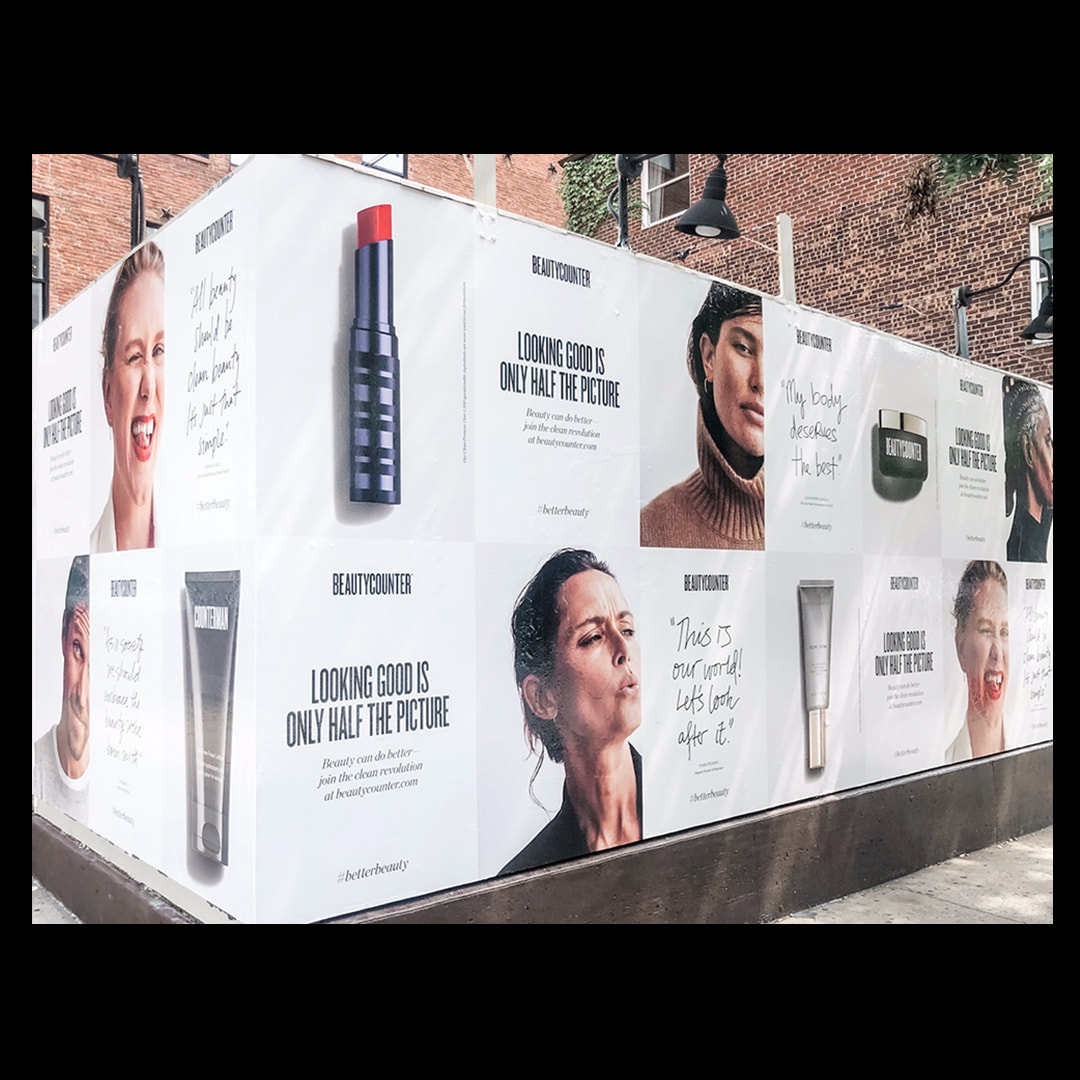

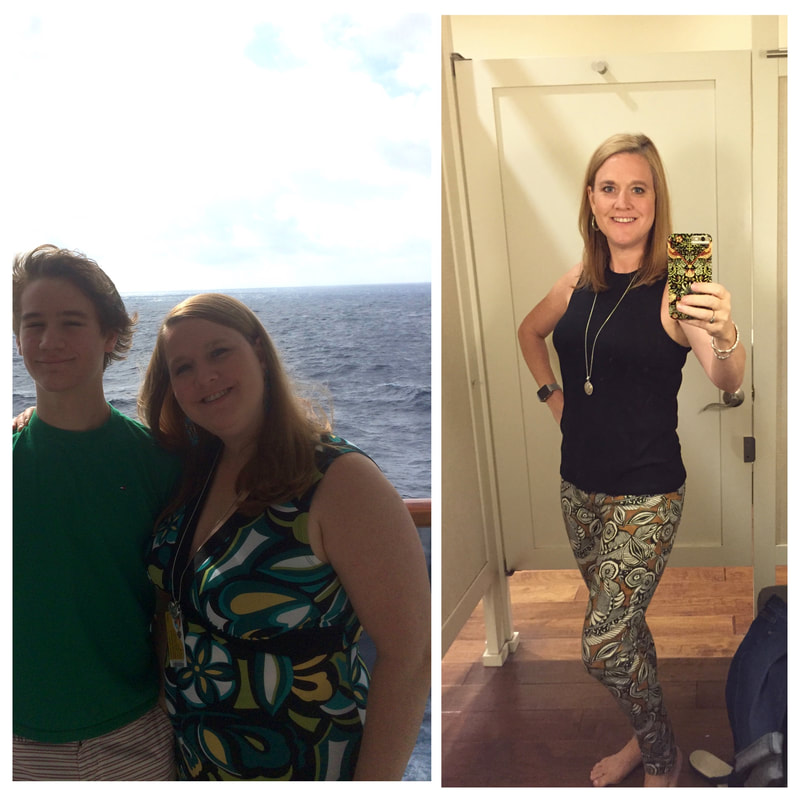
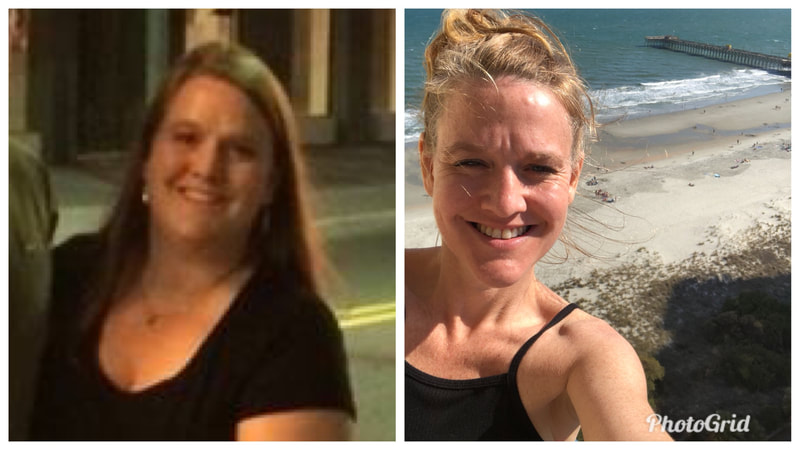

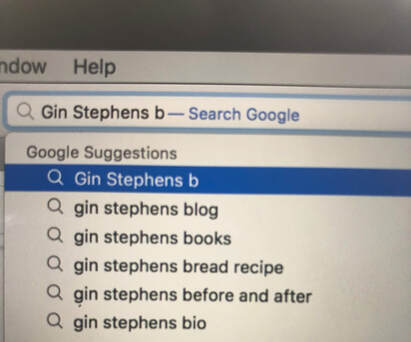
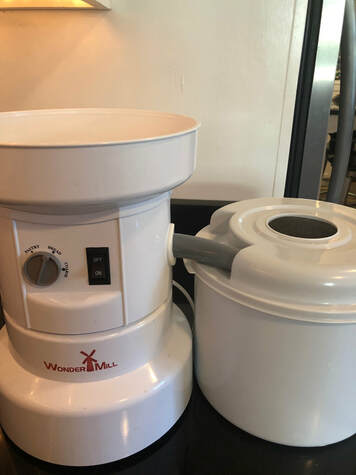
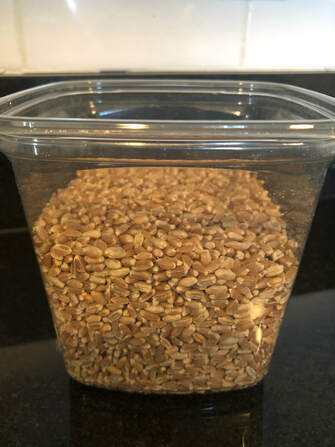
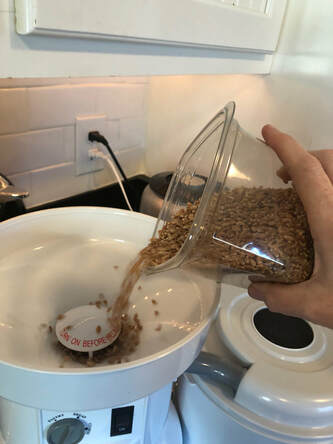
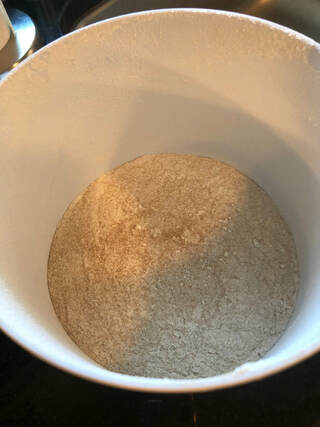
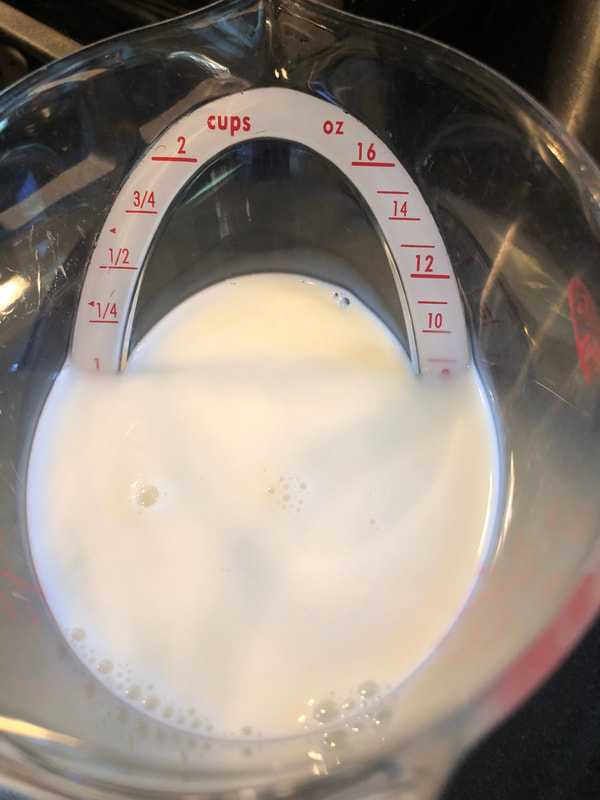
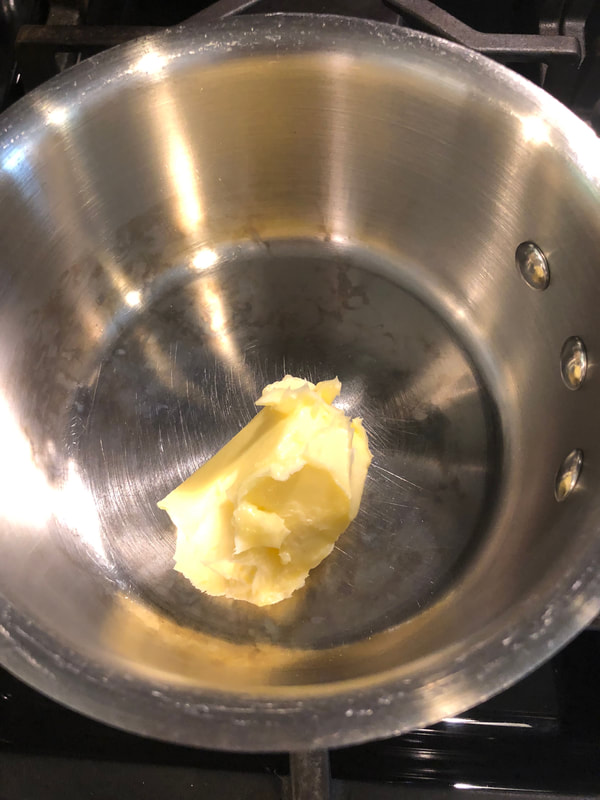
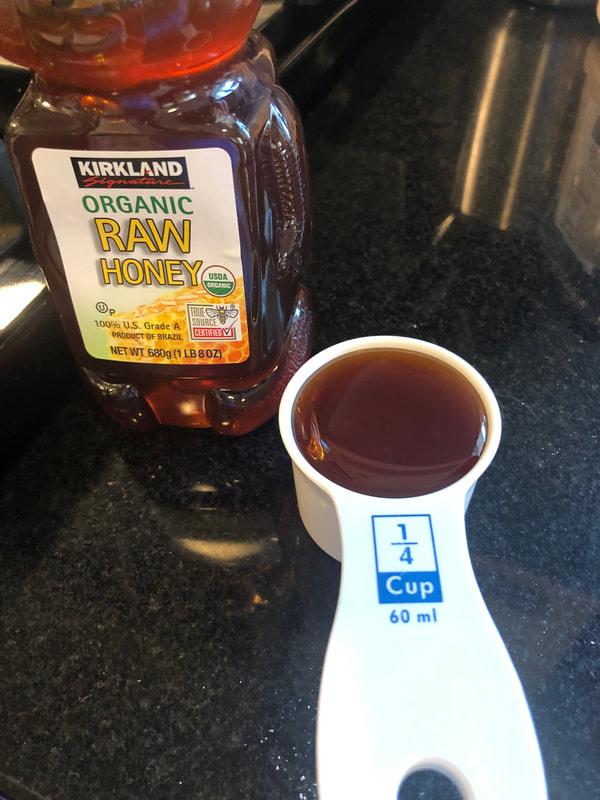
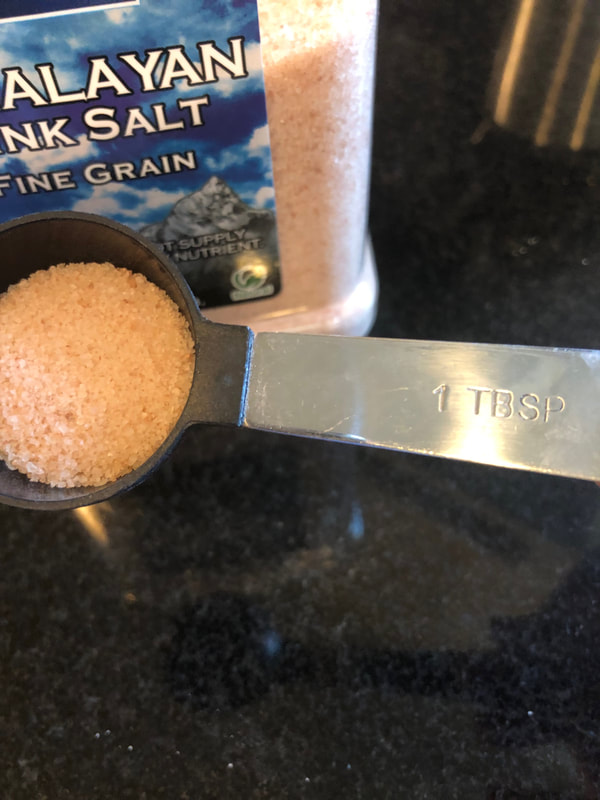
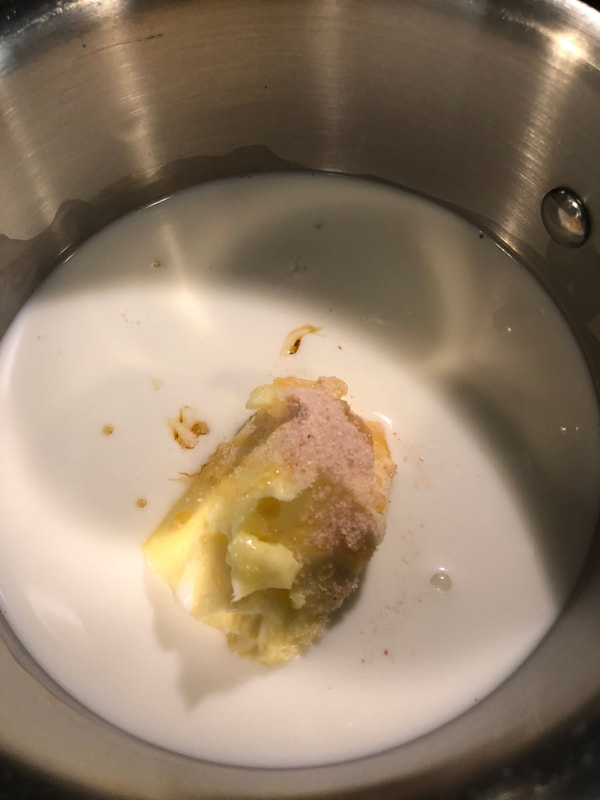
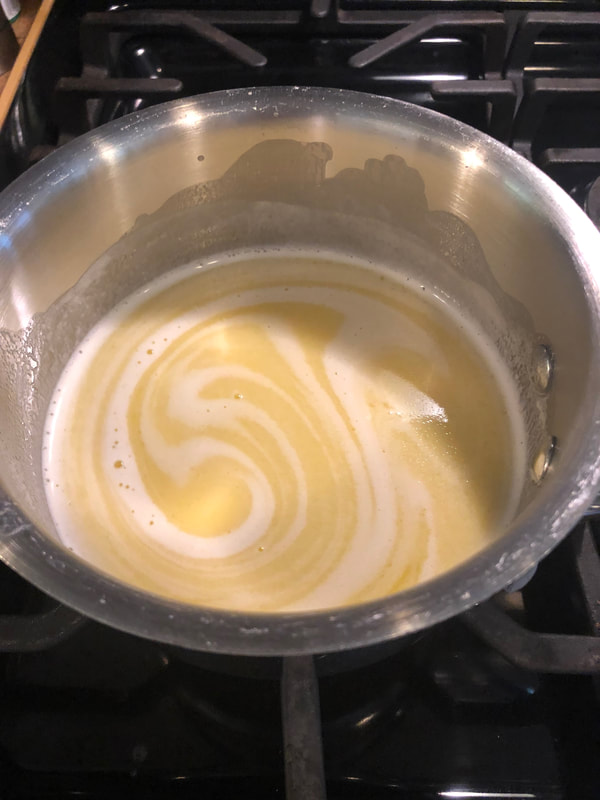
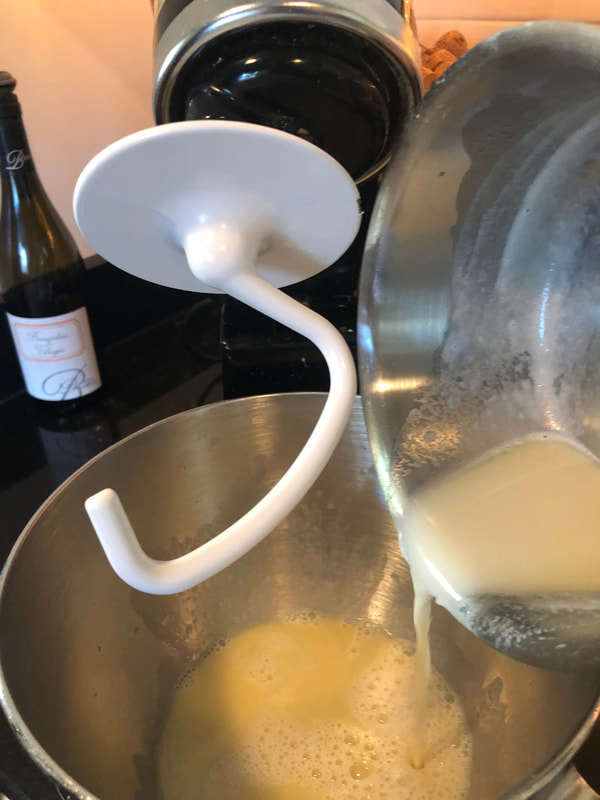
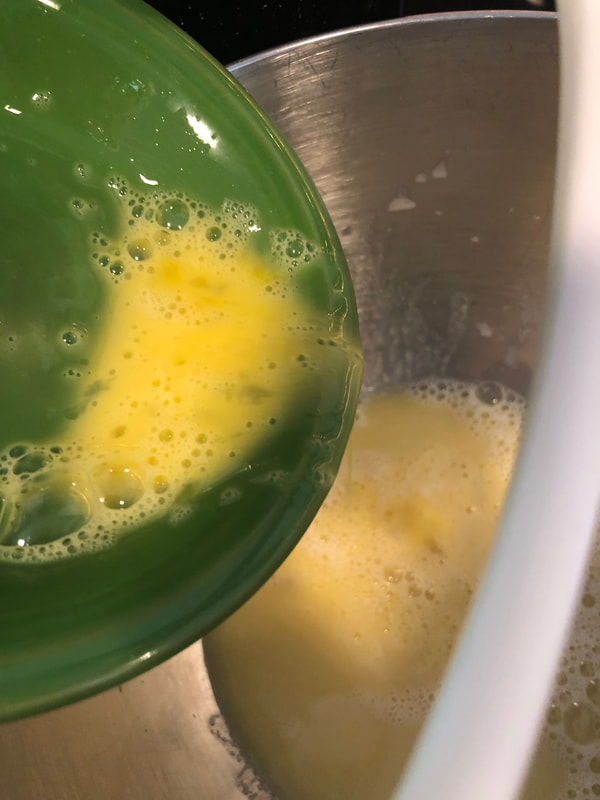
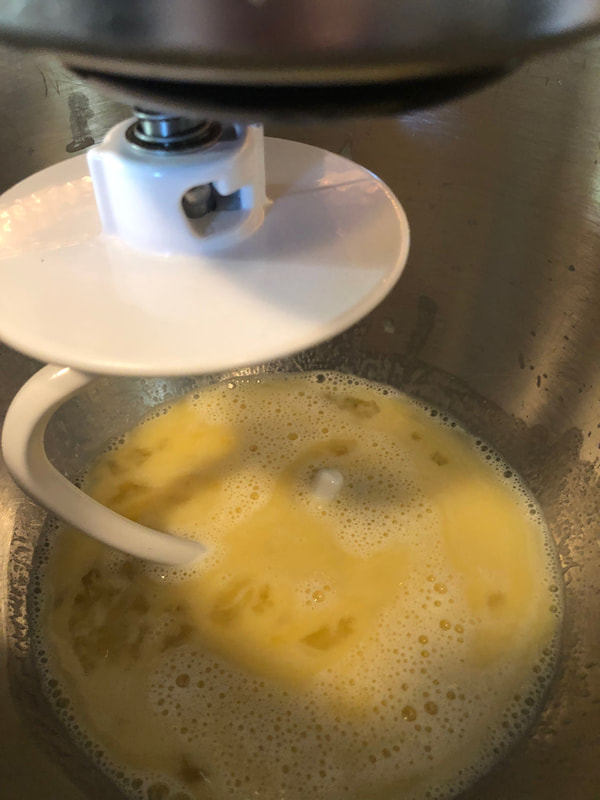
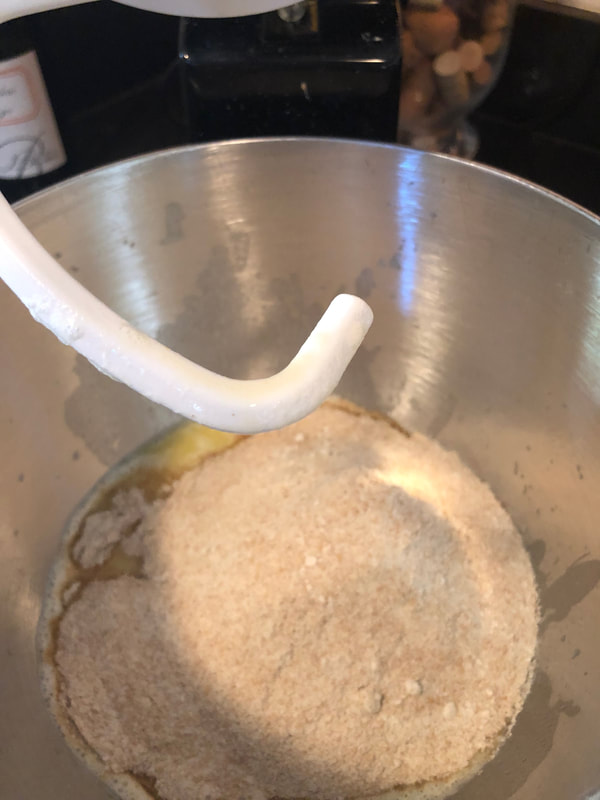
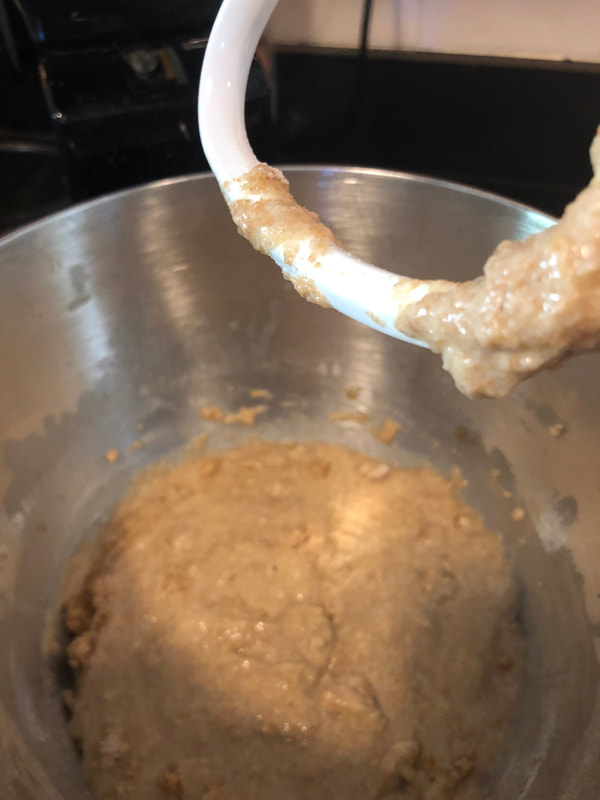
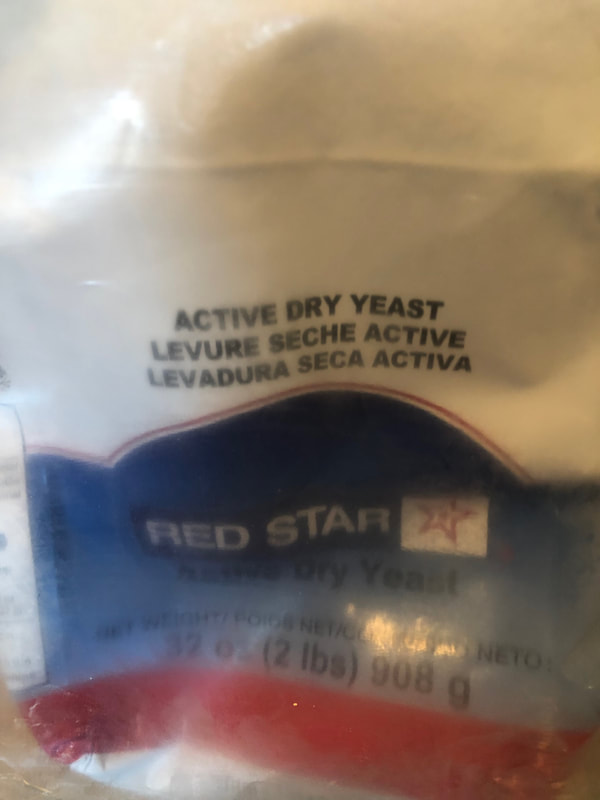
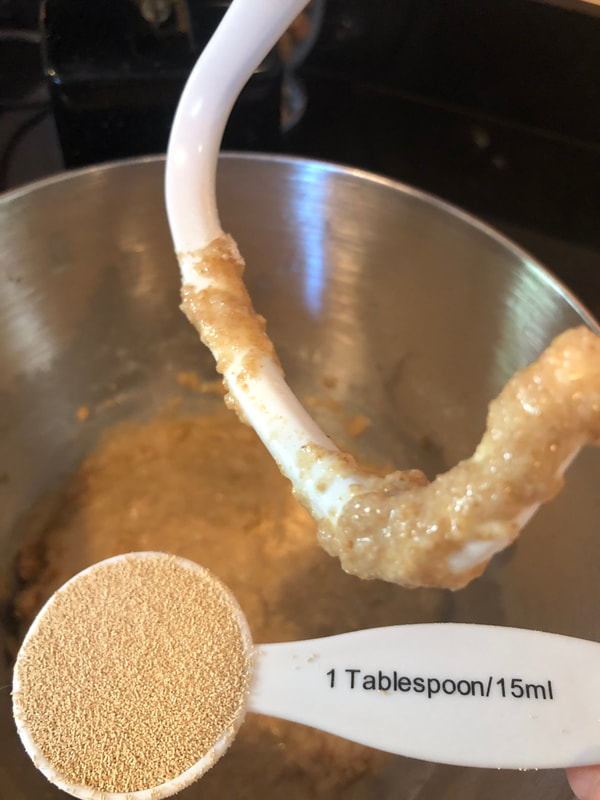
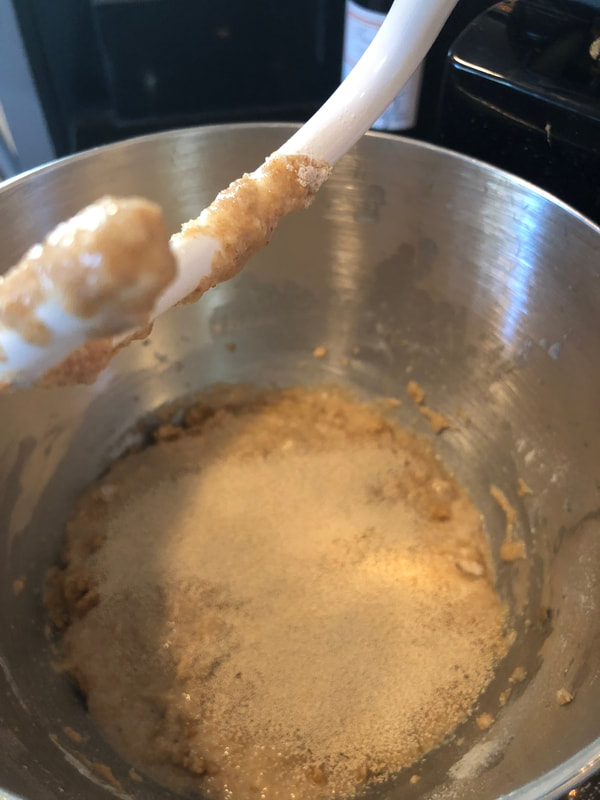
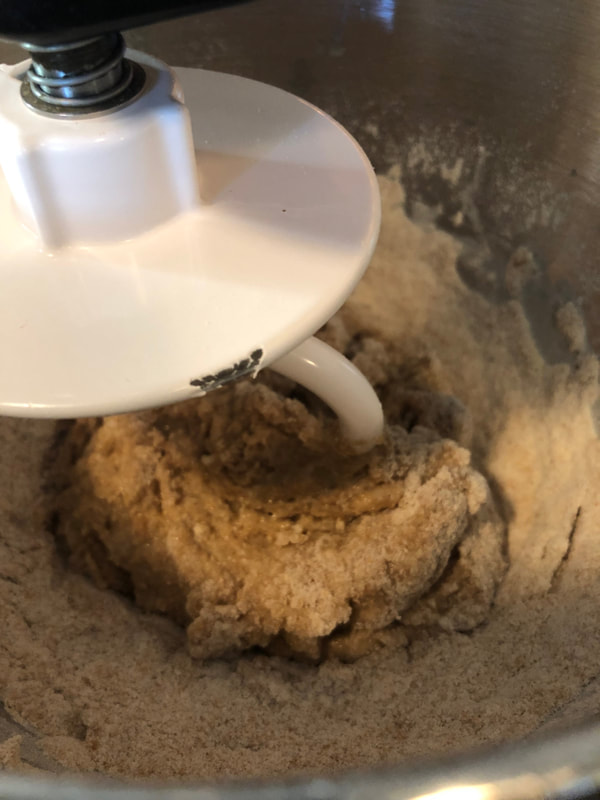
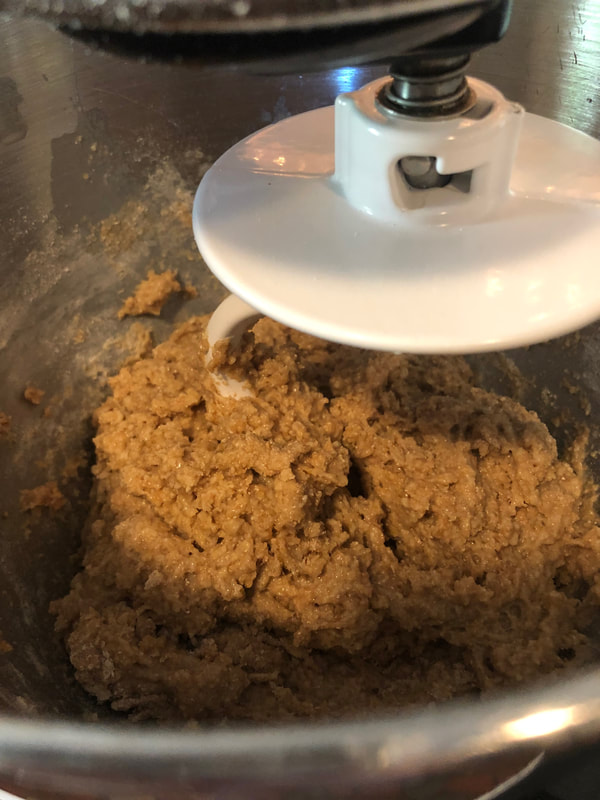
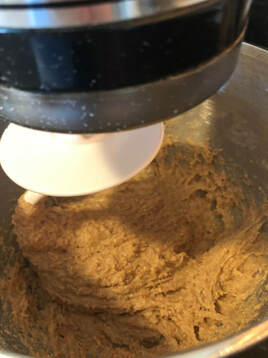
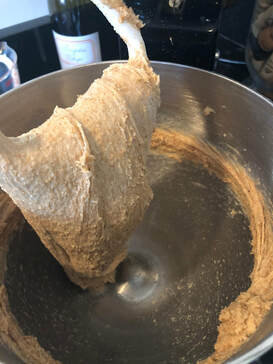

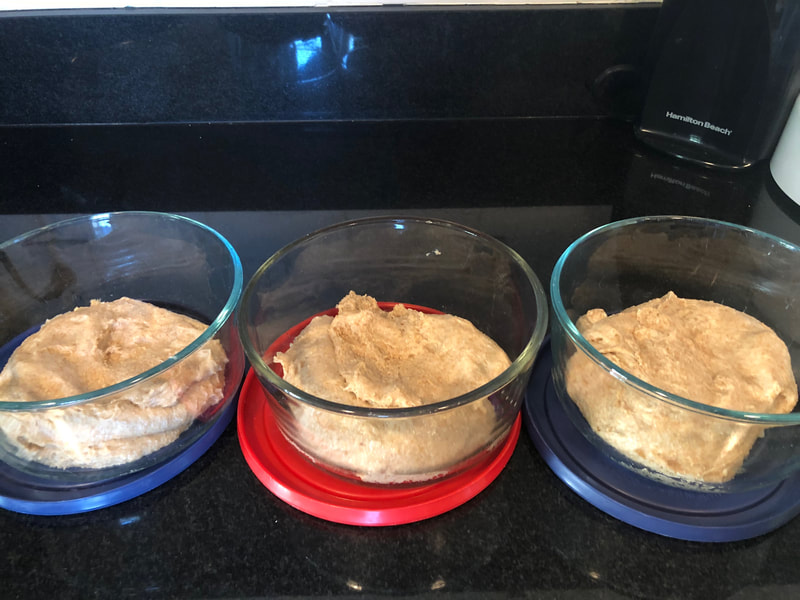
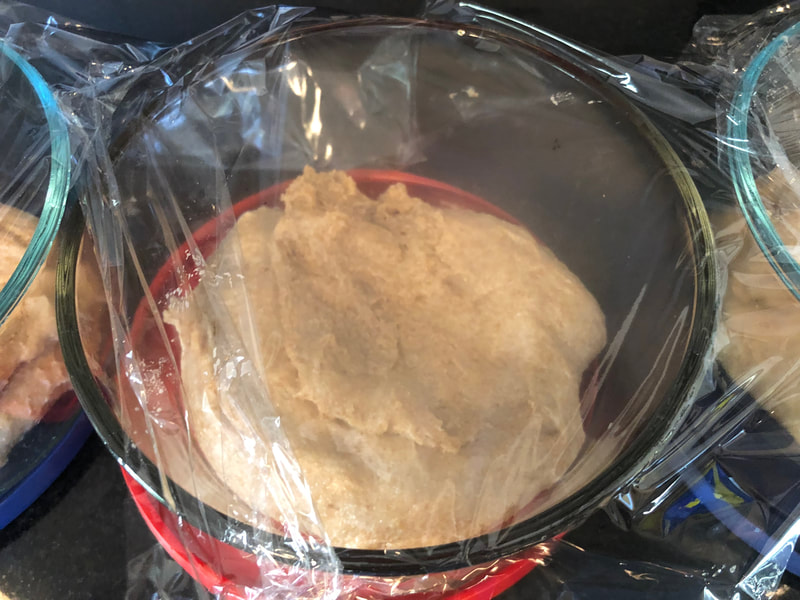
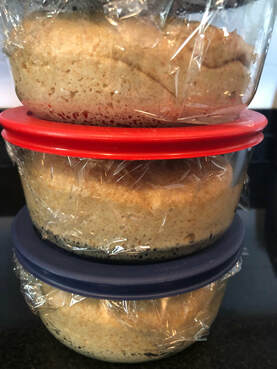
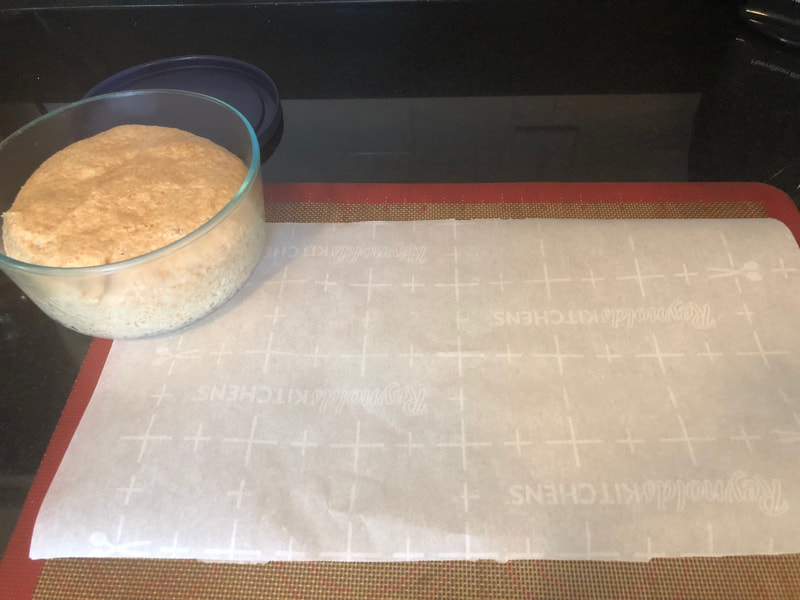
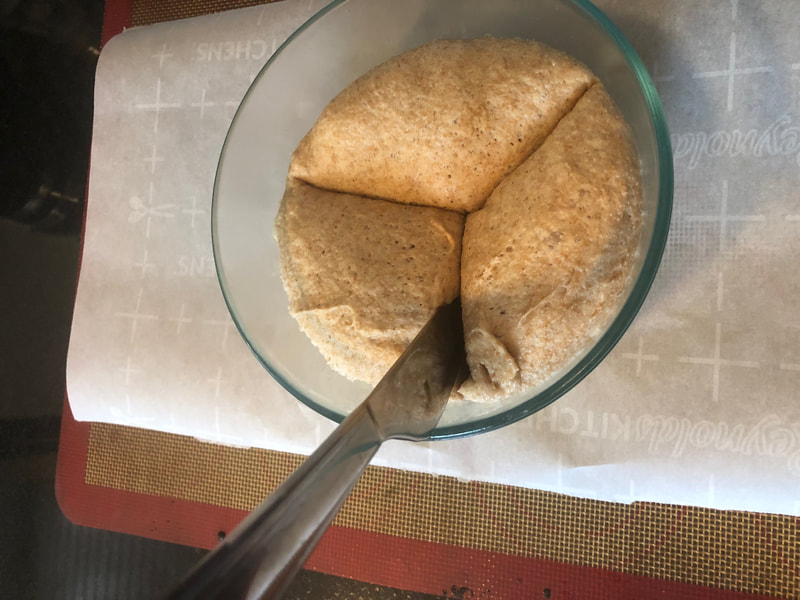

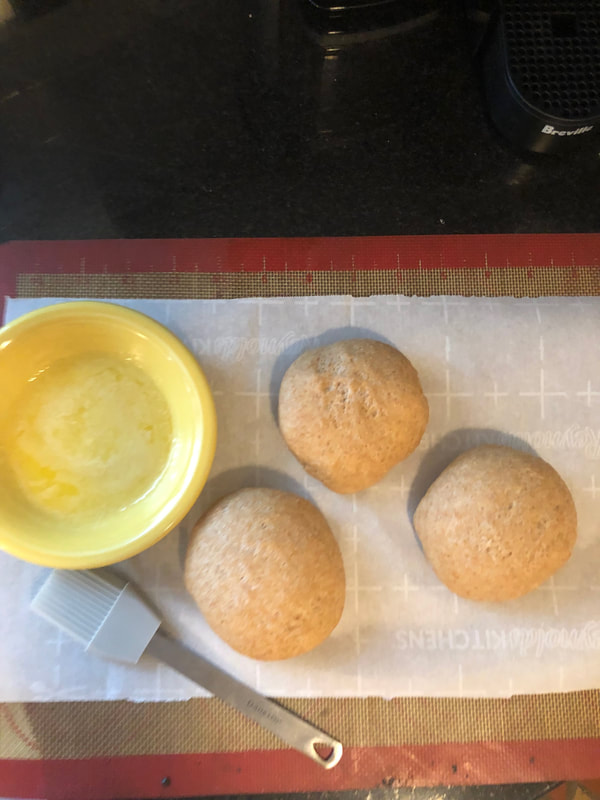
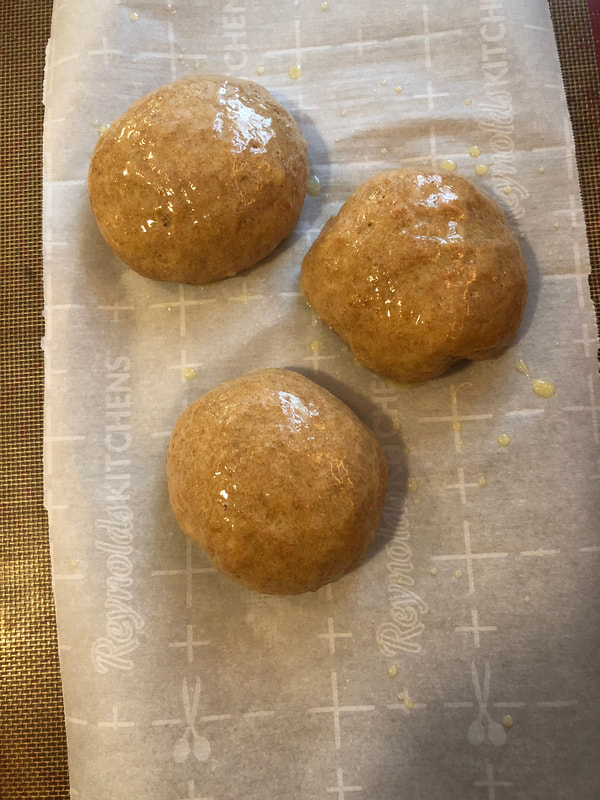
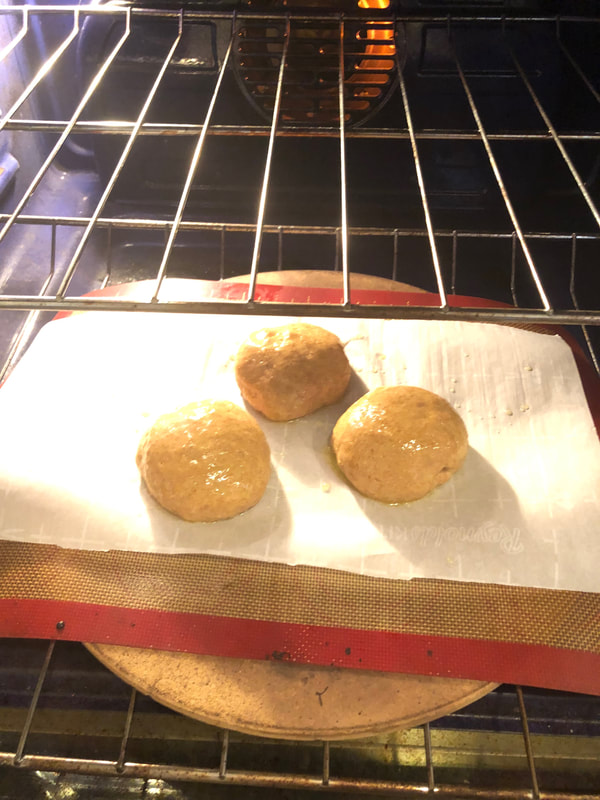
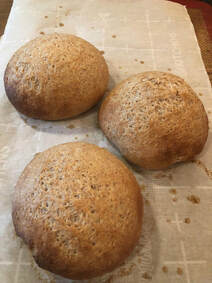
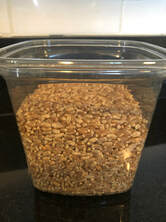
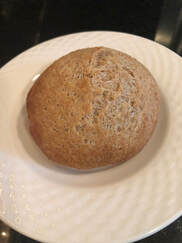



 RSS Feed
RSS Feed